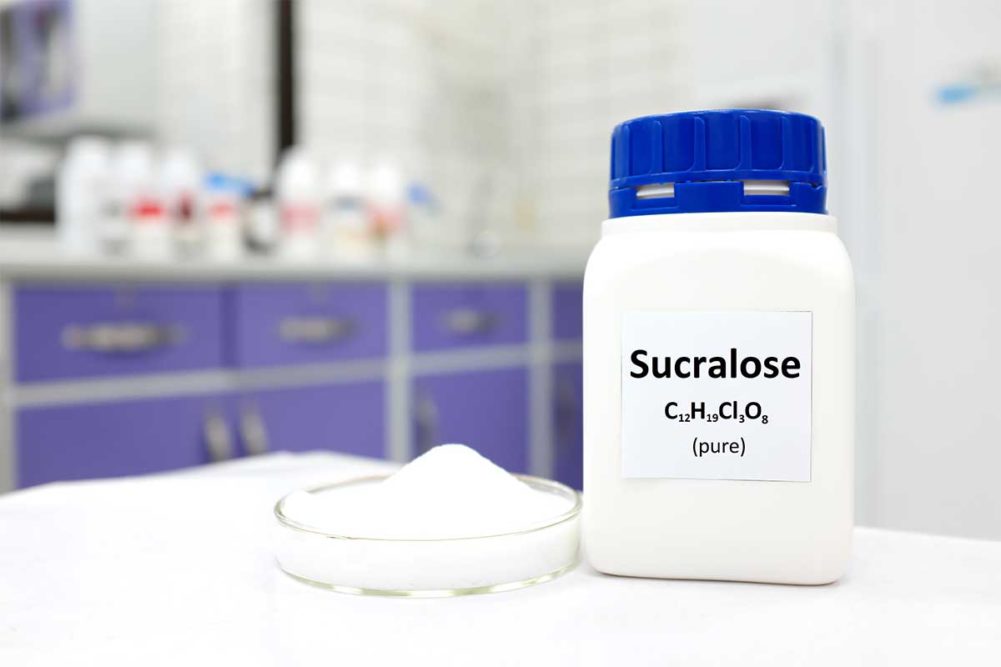LONDON – Increasing out-of-home consumption is leading to more demand for the high-intensity sweeteners sucralose and stevia, a good sign for Tate & Lyle PLC.
In the company’s Food and Beverage Solutions segment, revenue rose 19% to £475 million ($639 million) over the six months ended Sept. 30 with double-digit organic growth across all geographic regions. Volume was up 9%. In-home consumption remained robust, and out-of-home consumption continued to recover, according to the London-based company.
“In the first half, revenue from products supporting sugar reduction, excluding sucralose, was up 58%,” said Nick Hampton, chief executive officer, in a pre-recorded presentation made available Nov. 4. “Our range of clean label texturants delivered revenue growth of 24%, and our soluble fibers, which reduce sugar and provide nutritional benefits such as digestive health, grew by 30%.”
He elaborated on stevia’s success in sugar reduction systems.
“Our stevia business has performed very well, with revenue growing by 165% in the half,” Mr. Hampton said. “Excluding the acquisition of Sweet Green Fields, revenue is still up over 50%. Growth is being driven by the combination of our expanded portfolio of stevia solutions and our technical expertise in delivering solutions for sugar reduction.
“Products launched into the market using a combination of sweeteners is far outpacing products launched with a single sweetener. For example, while product launches containing only stevia grew by 20% between 2016 and 2020, products with a combination of stevia and monk fruit grew by 80% and stevia and fiber by 44%.”
Within Food and Beverage Solutions, New Products’ revenue rose 48%, reflecting strong customer demand for sugar reduction systems, and represented 14% of all Food and Beverage Solutions revenue.
Tate & Lyle achieved gains of l7% in revenue, to £72 million ($97 million), and 23% in volume in its sucralose business over the six months ended Sept. 30 when compared to the same time of the previous year. When compared to the six months ended Sept. 30, 2019, the increases were 14% in revenue and 21% in volume.
Three factors drove the sucralose growth, Mr. Hampton said in a Nov. 4 earnings call.
“No. 1, clearly, COVID bounce in beverages, especially as out-of-home consumption increased, and sucralose is, obviously, very beverage-focused because of the nature of the ingredient,” he said. “Secondly, we saw really strong demand from a reformulation perspective. So sucralose is still the most reformulated high-intensity sweetener out there. And then thirdly, what we’re seeing from our customers is some interest to secure supply from a Western source and, obviously, having a manufacturing facility in North America really helps with that.”
Tate & Lyle in July announced it had agreed to sell a controlling stake in a new company (NewCo) and its subsidiaries to KPS Capital Partners LP. The new company will include the Primary Products business in North America and Latin America and its interests in the Almidones Mexicanos SA de CV and DuPont Tate & Lyle Bio-Products Co., LLC joint ventures. The transaction is on track to be completed in the first quarter of 2022. Tate & Lyle will report results from the new company as discontinued operations for all of the fiscal year ending March 31, 2022.
“The legal restructuring required to separate NewCo from Tate & Lyle is making good progress, and the information technology separation to enable both Tate & Lyle and NewCo to report financially on a stand-alone basis from completion is also proceeding as planned,” Mr. Hampton said in the pre-recorded presentation. “I'm pleased to say we remain on track to complete the transaction in the first quarter of the 2022 calendar year.”
Continued operations, which includes Food and Beverage Solutions and Sucralose, had revenue of £656 million over the six-month period, which was up 11% from £592 million.
Discontinued operations included sweeteners, starches and commodities in the six-month financial results. Volume was up 3% while revenue increased 22%. When compared to the six months ended Sept. 30, 2019, volume was down 5% while revenue was 15% higher.
Cost inflation added up to £26 million ($35 million) in the first half of the year in areas such as energy, labor, consumables and transportation. Tate & Lyle mitigated the inflation through productivity benefits of £14 million, pricing of £10 million and cost discipline. Tate & Lyle expects cost inflation to increase in the second half of the fiscal year. Pricing will play a greater role in the company’s mitigation efforts.






